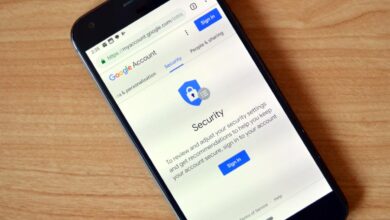
Roku Hacker Credit Card Theft
Hackers steal Roku credit card details to make fraudulent purchases, leaving victims reeling from financial loss and emotional distress. This sophisticated crime highlights the vulnerability of seemingly harmless devices and the importance of proactive security measures. Understanding how hackers exploit Roku devices, the methods they use, and the steps users can take to protect themselves is crucial in navigating this digital threat landscape.
This post delves into the intricate world of Roku device security, exploring the vulnerabilities that allow hackers to access sensitive credit card information. We’ll examine the techniques used, the impact on victims, and practical security measures to safeguard Roku users from becoming targets.
Roku Device Security Vulnerabilities
Roku streaming devices, while convenient, are susceptible to security breaches. Understanding the potential vulnerabilities allows users to take proactive steps to protect their accounts and personal information. This discussion explores the common weaknesses in Roku devices, how hackers exploit them, and how weak security practices contribute to these attacks.The design and software of Roku devices, while aimed at ease of use, can present security vulnerabilities if not properly managed.
These vulnerabilities can be exploited by malicious actors to gain unauthorized access to user accounts and potentially sensitive data. This analysis highlights the critical points of vulnerability and how hackers can leverage these weaknesses.
Common Security Vulnerabilities
Roku devices, like other networked devices, rely on software and protocols that, if not carefully designed and maintained, can be exploited. Outdated firmware, insecure communication protocols, and inadequate authentication mechanisms are common vulnerabilities. This inherent weakness allows hackers to target devices, compromise accounts, and potentially steal data.
Software Flaws and Design Weaknesses
One critical area of vulnerability lies in the software itself. Bugs in the Roku operating system, or in applications installed on the device, can be exploited by hackers. These flaws may allow unauthorized access to user accounts, device control, or sensitive data. Furthermore, insufficient input validation in applications or the operating system can lead to code injection vulnerabilities, allowing hackers to execute malicious code on the device.
Potential Entry Points for Hackers
Hackers can exploit several entry points to gain control of Roku devices. Vulnerabilities in the network configuration, such as open ports or weak network security, provide avenues for attack. A poorly secured Wi-Fi connection or an insecure home network can expose the Roku device to malicious actors. Moreover, vulnerabilities in the Roku operating system’s user interface or third-party apps installed on the device provide entry points for hackers to gain unauthorized access.
Methods Used by Hackers to Exploit Vulnerabilities
Malicious actors use various methods to exploit vulnerabilities in Roku devices. These methods include exploiting vulnerabilities in the Roku operating system or installed applications, using phishing techniques to trick users into providing credentials, and exploiting weak passwords or default configurations. Furthermore, sophisticated attacks may leverage social engineering tactics to trick users into installing malicious apps or performing actions that compromise their security.
Role of Weak Passwords or Default Configurations
Weak passwords or default configurations are significant contributors to successful attacks on Roku devices. A simple password or the use of default credentials makes the device easily accessible to hackers. This is particularly true for devices that have not been properly configured with strong passwords or have retained default configurations. Consequently, users should always change default passwords and use strong, unique passwords for all their devices.
Methods of Credit Card Data Extraction

Roku devices, while offering convenient streaming, can be vulnerable to malicious actors seeking to steal sensitive information, including credit card details. Understanding the methods employed by hackers is crucial for users to protect their data and devices. This exploration delves into the techniques hackers utilize to extract credit card information from Roku devices, highlighting the importance of robust security measures.Hackers employ a multifaceted approach to extract credit card data from Roku devices.
These methods often involve exploiting vulnerabilities in the device’s software or tricking users into divulging their information. The methods range from sophisticated phishing campaigns to the deployment of malware designed specifically for Roku devices. A deep understanding of these methods is essential for Roku users to safeguard their financial information.
Phishing Tactics
Phishing tactics are a prevalent method for obtaining credit card information from Roku users. These tactics often involve deceptive emails, messages, or websites that mimic legitimate Roku services or applications. Users are enticed to enter their credit card details on fraudulent websites that appear authentic. These fraudulent sites may have similar layouts and branding to legitimate Roku websites, leading to unintentional disclosure of sensitive information.
Malware Installation
Malware, or malicious software, can be installed on Roku devices through various avenues. One common method is via compromised applications or updates that appear legitimate. These malicious applications might subtly collect credit card information during transactions or transmit data to remote servers controlled by hackers. Users might unknowingly download such applications through unofficial app stores or compromised links.
Botnet Attacks
Compromised Roku devices can be integrated into broader botnet attacks. These attacks utilize numerous compromised devices, working in concert to perform malicious tasks. This can include launching denial-of-service (DoS) attacks on websites or sending spam emails. The credit card data extracted from individual compromised Roku devices can be aggregated and used for fraudulent purchases or further criminal activities.
Criminals could use the gathered information to create fraudulent accounts or engage in large-scale financial fraud.
Comparison of Methods
Different methods for credit card theft vary in sophistication and complexity. Phishing relies on social engineering to trick users into revealing their information, while malware exploits vulnerabilities in the Roku device’s software. Botnet attacks leverage the collective power of numerous compromised devices, while keyloggers directly capture input from the device. The effectiveness of each method depends on various factors, including the sophistication of the attack and the vigilance of the user.
Keylogger Exploitation
Keyloggers are malicious programs designed to record keystrokes on a target device. On a Roku device, a keylogger could record credit card information entered during online purchases. This data could then be transmitted to a remote server controlled by the attacker. Keyloggers can be installed on Roku devices through various means, including compromised apps or malicious software updates.
The collected data can be used for unauthorized financial transactions.
Impact of Roku Device Attacks

Roku devices, while offering convenient streaming, can become vulnerable entry points for malicious actors. When hackers exploit these vulnerabilities to steal credit card information and make fraudulent purchases, the consequences for victims extend far beyond simple financial loss. The emotional and practical distress caused by these attacks can be significant, and the legal ramifications for the perpetrators are severe.
Understanding these impacts is crucial to appreciating the importance of robust security measures and responsible digital practices.
Financial Losses for Victims
Fraudulent purchases made using stolen credit card details can result in substantial financial losses for Roku device users. The amount varies depending on the number of fraudulent transactions and the value of the goods or services purchased. A single transaction could lead to hundreds of dollars in losses, while a series of fraudulent purchases can cause significant financial strain.
Consider a scenario where an attacker successfully gains access to a Roku user’s account and makes unauthorized purchases of high-value items. This can lead to substantial financial setbacks, affecting the victim’s ability to manage their finances and meet their financial obligations. The emotional distress associated with this can be profound.
Emotional Distress and Inconvenience
Beyond the financial impact, victims of Roku device attacks experience considerable emotional distress. The realization that personal financial information has been compromised can be incredibly unsettling, leading to feelings of anxiety, anger, and frustration. The inconvenience of dealing with the aftermath, such as disputing charges, contacting credit card companies, and restoring financial stability, adds to the emotional burden.
Furthermore, the loss of trust in online security and the fear of future attacks can be detrimental to one’s well-being.
Legal Ramifications for Hackers
Hackers engaging in fraudulent activities using compromised Roku devices face severe legal repercussions. Depending on the severity of the crime, penalties can include substantial fines, imprisonment, and a criminal record. These legal ramifications can have a lasting impact on the hacker’s life, affecting their ability to secure employment, housing, and other opportunities. Laws regarding identity theft and financial fraud are stringent, and authorities are actively pursuing individuals who engage in such activities.
Examples of Similar Attacks on Other Devices or Platforms, Hackers steal roku credit card details to make fraudulent purchases
The theft of sensitive data and subsequent fraudulent activities are not unique to Roku devices. Similar attacks have targeted other platforms and devices. For example, vulnerabilities in mobile banking apps have led to the theft of user credentials and subsequent financial losses. Attacks on IoT devices, such as smart home devices, have also exposed personal information and enabled unauthorized access.
The potential for data breaches and fraudulent activities exists across a wide range of platforms, emphasizing the need for comprehensive security measures.
Consequences of Roku Device Attacks
| Type of Loss | Magnitude | Frequency | Mitigation Strategy |
|---|---|---|---|
| Financial Loss | Hundreds to thousands of dollars, depending on the number and value of fraudulent purchases. | Increasing as vulnerabilities are exploited. | Monitor account activity closely, report suspicious transactions immediately, and use strong passwords and multi-factor authentication. |
| Emotional Distress | Significant anxiety, anger, and frustration stemming from compromised financial information and the resulting inconvenience. | High, as victims experience the emotional toll of the attack. | Seek support from trusted advisors, use resources available for identity theft victims, and focus on restoring financial and emotional stability. |
| Legal Ramifications | Fines, imprisonment, and criminal record for hackers. | Increasing as authorities prosecute such crimes. | Strengthen security measures on devices, develop comprehensive security awareness programs, and report vulnerabilities to authorities. |
| Reputation Damage | Loss of trust in online platforms and personal safety. | Significant, as incidents create a culture of fear. | Promote cybersecurity awareness, implement effective security protocols, and establish robust reporting mechanisms. |
Security Measures for Roku Users
Protecting your Roku device and personal information from potential security threats is paramount. The recent vulnerabilities highlight the importance of proactive security measures. Taking steps to safeguard your Roku account and device can significantly reduce the risk of unauthorized access and fraudulent activity.Understanding the methods hackers employ to exploit Roku devices, and the potential consequences of these attacks, allows users to implement effective defense strategies.
By understanding the vulnerabilities and the attackers’ techniques, we can adopt appropriate countermeasures to mitigate the risks.
Strong Passwords and Account Monitoring
Robust passwords are a fundamental layer of security. Creating strong, unique passwords for your Roku account and other online services is crucial. Avoid using easily guessable passwords like “password123” or your birthdate. Instead, use a combination of uppercase and lowercase letters, numbers, and symbols. Consider using a password manager to generate and store complex passwords securely.Regularly monitoring your Roku account for any unusual activity is equally important.
Set up email notifications or alerts to notify you of login attempts from unfamiliar locations or devices. This proactive approach allows you to quickly identify and address potential security breaches.
Keeping Roku Software Updated
Roku frequently releases software updates that address security vulnerabilities. These updates often include patches for known exploits and improve overall system security. Ensuring your Roku device is running the latest software version is vital in maintaining a robust defense against cyber threats. Leaving your software outdated leaves your device susceptible to known attacks, much like leaving a door unlocked.
Reporting Suspicious Activity
If you suspect any unauthorized activity on your Roku account, immediately report it to Roku support. This could include suspicious login attempts, fraudulent purchases, or unusual device activity. Prompt reporting enables Roku to investigate and take necessary measures to secure your account. By promptly reporting suspicious activity, you can prevent further harm and mitigate the damage.
Hackers are unfortunately getting pretty creative with Roku devices, stealing credit card details to make fraudulent purchases. This unfortunately isn’t surprising, considering the recent news about vulnerabilities in other systems, like the Azure Cosmos DB. Knowing about the Azure Cosmos DB Vulnerability Details highlights a broader pattern of potential weaknesses in online services, making it even more crucial to safeguard your Roku device and personal information.
This emphasizes the need for extra caution when using any connected device that processes payment information.
Roku’s Recommended Security Practices
| Practice | Description | Implementation Steps | Benefits |
|---|---|---|---|
| Strong Passwords | Use complex, unique passwords for your Roku account and other online services. | Employ a combination of uppercase and lowercase letters, numbers, and symbols. Consider a password manager. | Enhanced security against unauthorized access. |
| Account Monitoring | Regularly check for unusual activity on your Roku account. | Enable email notifications or alerts for login attempts from unfamiliar locations or devices. | Early detection of potential security breaches. |
| Software Updates | Keep your Roku software updated to the latest version. | Regularly check for and install available software updates. | Mitigation of known security vulnerabilities. |
| Suspicious Activity Reporting | Immediately report any suspicious activity to Roku support. | Contact Roku support channels to report unusual login attempts, fraudulent purchases, or unusual device activity. | Swift response to potential security threats, preventing further harm. |
Preventing Future Attacks
The recent Roku device security vulnerabilities and subsequent credit card fraud highlight a critical need for proactive measures to prevent future attacks. This requires a multifaceted approach, encompassing improved security protocols, industry collaboration, and user education. A shift in focus from reactive patching to preventative measures is crucial for mitigating the risk of similar incidents in the future.The security of connected devices, like Roku, is a shared responsibility.
Addressing the vulnerabilities in the device itself, along with user practices, is vital. Robust security measures are essential not only to protect individual users but also to maintain the trustworthiness and reliability of the entire ecosystem.
Potential Solutions for Preventing Future Attacks
Implementing strong security measures at multiple levels is crucial. This involves not only strengthening the Roku device architecture but also educating users on safe practices. The security of the entire ecosystem depends on the collective effort of manufacturers, users, and regulatory bodies. A proactive approach, focusing on preventative measures, is the most effective way to safeguard against future attacks.
- Strengthening Roku’s Security Architecture: Roku should prioritize the development of more robust security protocols. This includes incorporating multi-factor authentication, implementing enhanced encryption methods, and regularly updating its firmware with security patches. Examples of successful implementation of this approach are seen in companies like Google and Apple, who consistently update their operating systems with critical security patches. These actions reduce the attack surface for malicious actors.
- Industry-Wide Collaboration: Collaboration between tech companies, security researchers, and regulatory bodies is paramount. Sharing best practices, threat intelligence, and security vulnerabilities among industry players would significantly improve the overall security posture of connected devices. This approach is already adopted in various sectors, like the financial industry, where information sharing is crucial for detecting and mitigating fraud.
- User Education and Awareness: Educating users on safe practices, such as strong passwords, avoiding suspicious links, and regularly updating software, is essential. User awareness is a significant factor in preventing many types of online fraud. Companies like Microsoft often provide educational resources to their users on how to avoid phishing attacks.
Improvements in Device Authentication and Authorization
Robust authentication and authorization methods are essential to prevent unauthorized access to Roku devices. Implementing stronger authentication mechanisms, such as biometric verification or hardware-based authentication, can significantly deter attackers. This approach can be seen in mobile banking apps, where two-factor authentication is standard practice.
- Implementing Multi-Factor Authentication: Roku should consider implementing multi-factor authentication (MFA) as a standard security measure. MFA requires users to provide more than one form of identification, such as a password and a code from a security app. This significantly increases the complexity for attackers.
- Utilizing Hardware-Based Authentication: Integrating hardware-based authentication, such as a dedicated security chip, would further enhance the security posture. This approach is employed in high-security environments, like government data centers, to ensure that only authorized users can access sensitive information.
Potential Legislative Changes and Regulatory Measures
Legislation and regulations can play a significant role in deterring and punishing fraudulent activities related to connected devices. Clearer legal frameworks and stricter penalties for such crimes are crucial.
Ugh, hackers stealing Roku credit card details for fraudulent purchases is a real pain. It’s frustrating how easy it is for criminals to exploit vulnerabilities. Fortunately, the Department of Justice Offers Safe Harbor for MA Transactions Department of Justice Offers Safe Harbor for MA Transactions could potentially help in these situations. Hopefully, policies like this will help prevent similar credit card theft issues from happening again, protecting people from these malicious Roku hackers.
| Proposed Action | Description | Impact | Feasibility |
|---|---|---|---|
| Strengthening Data Breach Notification Laws | Mandating more stringent notification procedures for data breaches involving connected devices, including Roku. | Increased transparency and accountability for companies handling sensitive user data. | High. Existing data breach notification laws can be adapted and strengthened. |
| Implementing Stricter Penalties for Fraudulent Activities | Increasing the penalties for individuals and organizations involved in fraudulent activities using connected devices. | Deterrent for potential attackers and encourage companies to prioritize security. | Medium. Requires legislative action and may face challenges in enforcement. |
| Establishing Clearer Liability for Device Manufacturers | Defining clearer legal responsibilities for device manufacturers in cases of security breaches. | Encourages proactive security measures by manufacturers. | Medium. Requires careful legal drafting to avoid unintended consequences. |
Case Studies and Examples: Hackers Steal Roku Credit Card Details To Make Fraudulent Purchases
Roku devices, while convenient, are increasingly becoming targets for malicious actors. Understanding how these attacks unfold, and the impact on victims, is crucial for staying protected. This section delves into real-world examples, highlighting the steps involved in a Roku credit card theft, and comparing these tactics to other payment platform vulnerabilities.The rise of connected devices like Roku has created a new frontier for cybercriminals.
These attackers exploit vulnerabilities in software and operating systems to gain unauthorized access to sensitive data, including credit card information. Analyzing specific cases provides valuable insights into the techniques used and the steps necessary to mitigate these risks.
A Hypothetical Roku Credit Card Theft Case
A Roku user, Sarah, had her Roku device compromised through a malicious update. The attacker gained access to her device and then to her Roku account, which was linked to her credit card. The attacker used this access to make unauthorized purchases on online retailers using Sarah’s credit card information.
Attack Stages:
1. Compromised Update
A malicious update disguised as a legitimate Roku update is downloaded and installed.
Recent reports of hackers stealing Roku credit card details for fraudulent purchases highlight a critical vulnerability in software development. Protecting user data requires proactive measures, like implementing robust security protocols. This calls for deploying AI Code Safety Goggles Needed here to identify and fix potential security flaws before they’re exploited. Ultimately, preventative measures are key to stopping hackers from making fraudulent purchases using stolen Roku credit card information.
2. Data Extraction
Malicious software embedded in the update extracts Sarah’s Roku account credentials, including her linked credit card information.
3. Unauthorized Purchases
The attacker uses the stolen credit card details to make fraudulent purchases on various online platforms.
4. Concealment
The attacker hides their tracks by using virtual private networks (VPNs) and proxy servers.
Impact on Victims
Sarah’s fraudulent transactions appeared on her credit card statement, causing significant financial harm. She had to report the fraudulent activity, potentially leading to a lengthy dispute process with her credit card company. The emotional toll of dealing with the financial consequences, as well as the violation of trust, cannot be underestimated.
Fraudulent Transaction Example
A fraudulent transaction on Sarah’s account statement might show a purchase of $500 for a gaming console on a retailer’s website she never visited. There might be multiple transactions under different names, locations, or purchase descriptions. It’s crucial for users to meticulously review their account statements for any unusual activity.
Comparison with Other Attacks
Similar attacks targeting other devices or payment platforms often involve similar tactics, such as malware infections, phishing scams, or social engineering. The difference lies in the specific vulnerabilities exploited on each platform. For example, attacks on mobile banking apps often involve exploiting vulnerabilities in the app’s security protocols. However, Roku attacks exploit vulnerabilities in the Roku operating system, which is less directly connected to financial institutions.
This illustrates the evolving nature of cybercrime and the need for robust security measures across all platforms.
Concluding Remarks

In conclusion, hackers steal Roku credit card details through various sophisticated methods, causing significant financial and emotional harm to victims. Understanding these vulnerabilities and implementing robust security practices is paramount. Roku users must prioritize strong passwords, software updates, and vigilant monitoring of their accounts. The future of Roku security relies on continued collaboration between users, developers, and regulatory bodies.
Ultimately, protecting personal information in the digital age demands a proactive approach, not just reactive measures.
Q&A
What are some common Roku device security vulnerabilities?
Roku devices, like many internet-connected devices, can be susceptible to vulnerabilities in their software or design. This can include outdated software, weak default passwords, or insufficient security protocols. Hackers can exploit these vulnerabilities to gain unauthorized access to user accounts.
How can I protect my Roku device from these attacks?
Strong passwords, regular software updates, and monitoring for suspicious activity are key. Enable two-factor authentication whenever possible. Avoid using default passwords and promptly report any suspicious activity to Roku support.
What are the potential financial losses associated with these attacks?
Financial losses can range from small fraudulent charges to substantial amounts depending on the number of compromised accounts and the frequency of attacks. Victims may also face costly charges for unauthorized transactions and time spent rectifying the issue.
What are the legal ramifications for hackers engaging in such activities?
Hackers engaging in such activities face serious legal consequences, including criminal charges, substantial fines, and imprisonment. The severity of penalties often depends on the scale of the fraud and the damages caused.





